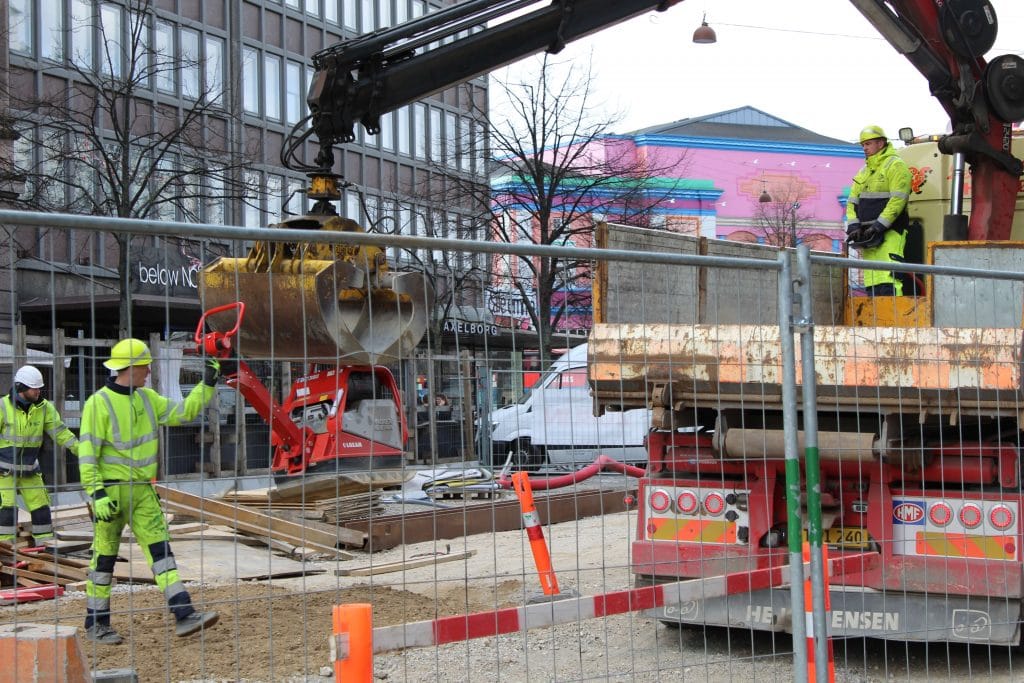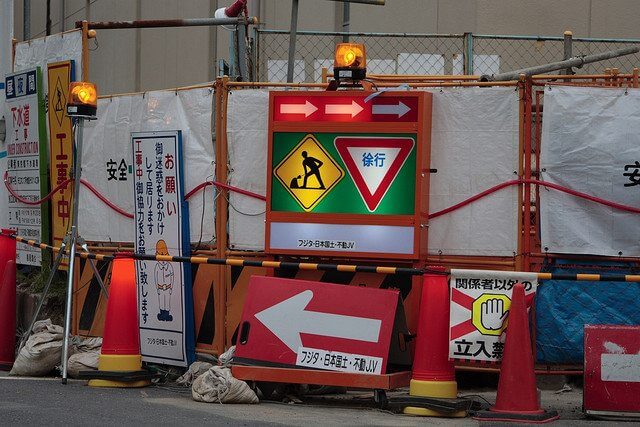Fostering collaboration and teamwork between your mobile workforce is equal parts art and science. With 72 percent of construction workers using a smartphone for work purposes, and the majority of day often spent at projects offsite, it can be challenging to manage your employees. Here are five tips on how you can unite, motivate and build your team – no matter how dispersed they are across various job sites.
Make communication priority number one
Never underestimate the impact a lack of face time can make on the productivity of your mobile workforce. “Out of sight, out of mind” is widely used and a cliche for a reason. Unless you prioritize regular communication with your staff, it is easy to become an abstract image of Big Brother to your mobile workforce.

Aside from regularly meeting with your employees over video conference or in person (if possible), you should also make sure to take advantage of real-time messaging and checklist apps. These tools will allow you to check in with your employees at a moment’s notice, as well as manage projects more efficiently. Instead putting one person in charge of updating project checklists, grant access to your whole crew for real-time updates and to remind them that their contributions and feedback are valued – because everybody loves crossing off a to-do list.
Offer an avenue for growth
In an anonymous survey distributed across more than 500 companies across 12 industries, TINYpulse found that construction and facility service workers have the highest morale of the job positions examined.
[convertful id=”6302″]
[convertful id=”6337″]
One of the main reasons lies in what the construction industry offers that many others often lack: opportunities for growth. Providing workers with programs such as apprenticeships to develop skills for new jobs gives them a sense that their career is progressing in tandem with their own capabilities, granting them an organic source of motivation in the process.

Offering opportunities for advancement, in combination with the right balance of management support and tools for success constitute the three areas that unsatisfied workers cite as the source of their professional malaise. By showing (not telling) your employees that they’re nurturing a career instead of a dead-end job, their motivation will come from within and manifest in a higher level of productivity and teamwork.
Establish a workplace culture
The TINYpulse survey also found that the primary source of happy employees’ job satisfaction was in developing and maintaining healthy relationships with co-workers and superiors. Offering career growth opportunities is a key component of a healthy workplace culture, but there are other human elements to juggle at the same time. Setting tough goals for yourself and meeting them requires character, and not just on an individual level. Your company must have its own traits to survive and thrive – even when your workers spend the majority of their time offsite. Establishing a strong team identity is key to giving your team direction. It will enable them to work better with each other, as they are reminded of what they are striving to accomplish as a unit instead of simply looking out for number one.
Give real-time feedback
The annual performance review is becoming an extinct practice, particularly when it comes to younger generations who expect instant feedback. Immediate, constructive criticism is more helpful and appreciated for both sides. Allowing employees to make the same mistakes over and over until that dreaded performance review encourages poor work habits, damages your bottom line, and is unfair to your staff who may be all too eager to improve – if only they knew how. This problem can be especially exacerbated when an employee can be even less aware of their shortcomings and fields for improvement.

And just as you would provide immediate feedback, provide immediate kudos as well. Fostering loyalty is a two-way street, and reminding your employees that you recognize and appreciate their hard work is your end of the bargain to fulfill. Take time to celebrate their successes with the whole crew if it is merited, as peer affirmation is a great motivator as well.
Maintain a high level of emotional intelligence (EQ)
Having a high EQ means that, as a leader, you are able to express what you feel while staying in control of your emotions, and also have a knack for managing interpersonal relationships. According to Rutgers University psychology professor, Daniel Goleman, the fundamental traits of EQ consist of: self-regulation, self-awareness, empathy, social skill, and motivation. Most of those traits are obvious and self-explanatory, but self-regulation is underrated and often overlooked component of EQ.
Read here: 10 innovative construction materials
Leading requires confidence – up to a point. Confidence can often beget stubbornness, impulsiveness, and obliviousness – three absolute killers when it comes to maintaining the respect your workforce has for you. Like the company, you are a work in progress, which means you should be honest about your shortcomings and encourage constructive criticism from your staff.
Your level of self-awareness, empathy, and social skill will directly correspond to how well you manage conflict and crisis. Every employee has their own set of quirks and idiosyncrasies that you should study and keep in mind, should ever a workplace conflict arise. Studying these quirks, as well as the circumstance that led up to any professional clashes is the only way you can be preventative in the future. When it comes to building a strong team and culture, conflict mitigation is half the battle.
Leverage the latest in collaboration tools and technology
Face time with employees can certainly help to create a better team dynamic. Fortunately, there is no limit to the number of video conferencing apps available to your disposal, so make sure to find the one that best suits your business needs and use it as often as you can. The same goes for group chat apps that often serve as a more immediate and simpler alternative to long email threads and chains.
You should also keep in mind that paper systems, human error, and fraud are three peas in a terrible pod. “Buddy punching” is one of the most common and prolific sources of fraud in the construction industry, when it comes to tracking time. There’s little paper-based systems can do to foolproof them against such activity, which is why you should consider their software equivalents. Choosing a time tracking solution that uses the latest advancements in geofencing technology (reminding an employee to clock in or out in a designated area using his or her smartphone) ensures that the right person is clocking in from the right place, while minimizing the chances for human error associated with antiquated, manual processes.
Whether it’s becoming a great athlete, artist, or leader, you’ve got to have awesome fundamentals. By investing in the best workforce management tools or having regular and transparent communications, incorporating these practices into how you manage your workers each day is essential. Keeping these in mind as your business grows makes all the difference to maintaining a happy, motivated mobile workforce.
 Bob Drainville is the president and founder of Timesheet Mobile, a GPS-enabled time tracking and scheduling company that helps businesses manage their mobile workforce. Timesheet Mobile’s solutions are used by thousands of people worldwide, in industries as diverse as construction, transportation, healthcare and many others.
Bob Drainville is the president and founder of Timesheet Mobile, a GPS-enabled time tracking and scheduling company that helps businesses manage their mobile workforce. Timesheet Mobile’s solutions are used by thousands of people worldwide, in industries as diverse as construction, transportation, healthcare and many others.




